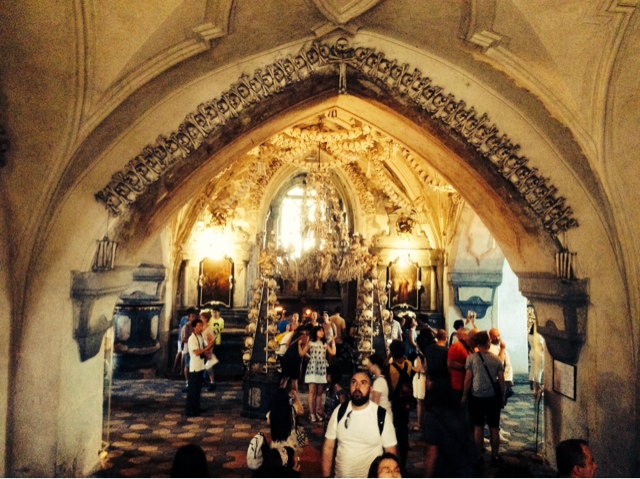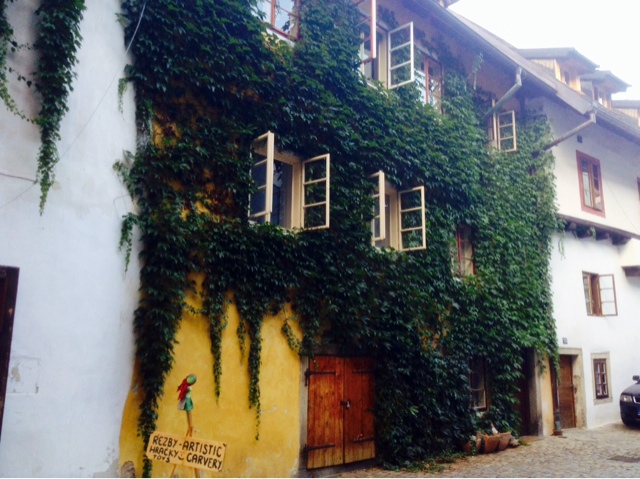Our first stop after Prague was Kutna Hora, for one simple reason. The Bone Church. While this might seem chilling and rather over dramatic name (it is in actual fact called the Sedlec Ossuary) it is also rather apt.
Although it was founded in 1142, the story of this little Roman Catholic chapel begins in 1278 when the Abbot of the time was sent to the Holy Lands and upon his return, brought back earth from this blessed place. He then sprinkled the earth around the Cemetary and due to this, it soon became a rather sought after place to be buried, odd as the concept sounds.
the subsequent disasters of the Black Death and the Hussite wars led to the burial of thousands in the Ossuary during the 14th century. The need for more space led to the exhuming of these burials and stacking of bones in decorative ways within the chapel during the 16th century as there was little else that could be done with so many skeletons- estimates put the number of people kept here at somewhere between 40,000-70,000 - a staggering number. Simply looking at the piles of bones was odd, I felt like I was in a movie set, and the idea that these were real bones, and once real people, was too hard to comprehend- there were simply too many.
Although interesting, the story could have ended here, if not for an enthusiastic wood carver in 1870 who was brought in to renovate the church. Although the bones were already decoratively arranged by this point, he took it a step further, reordering the bones and creating decorative works such as a coat of arms and a bone chandelier (made with at least one bone from every part of the body apparently, although I didn't check!)
It was odd how removed I felt from these bones, although it was creepy, it was nothing as bad as I had expected, although I think this was due to my inability to realise what it was I was really looking at.
After this little excursion, we headed for Cesky Kromlov, the most popular tourist destination in the Czech Republic after Prague, but with good reason. A beautifully picturesque town, built on the banks of the river with a castle high above, it was well worth the visit. The only negative is due to its tourism, it's best to stay outside of the town for cheaper hotels, and most of the restaurants are tourist traps. We did however find a place that made excellent toasted sandwiches and cakes.
The iconic castle tower that dominates the skyline of Cesky Kromlov looked very pretty in the setting light.
The town's inception dates back go the 13th century as a trade route due to it's location at a ford on the river. The town itself was full of winding streets, dilapidated houses and old cobblestones. It was very enjoyable to wander.
One of the main attractions of the town was the castle complex, the second biggest in the Czech Republic that still exists (Prague castle being the biggest). However the coolest thing for me was as we wandered across the drawbridge and looked down, we saw bears! They were the biggest and nicest looking bears I've seen in real life, and they looked so fluffy and soft I imagined they'd make a very cuddly teddybears - if they weren't busy ripping your head off.
The climb up the tower castle made my legs ache, but it was worth it once we got to the top. There was an interesting exhibition below that showed how one year the town council created a zipline from the tower across the river and down into the town for a few select people to cross.The pictures of the view were dizzing, but the funniest part was their mention of a random Russian man who wandered up and partaken In the activity before anyone realised he wasn't part of the team, before disappearing again. The view from the top of the castle was breathtaking, though I still couldn't imagine stepping off the tower, zipline or no.



















































